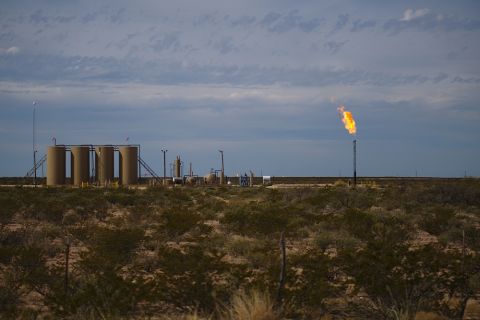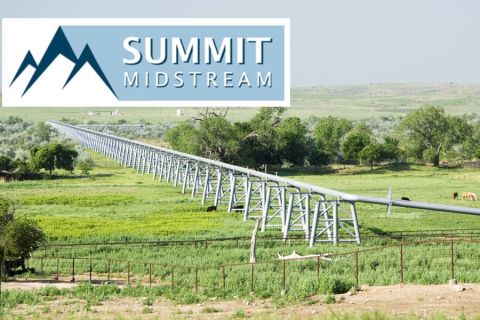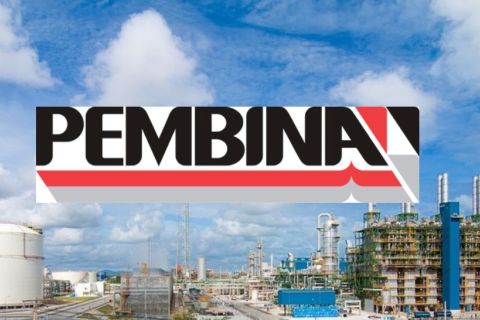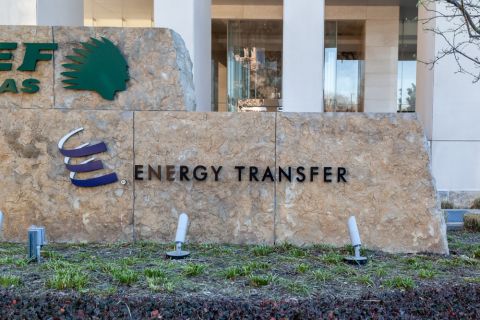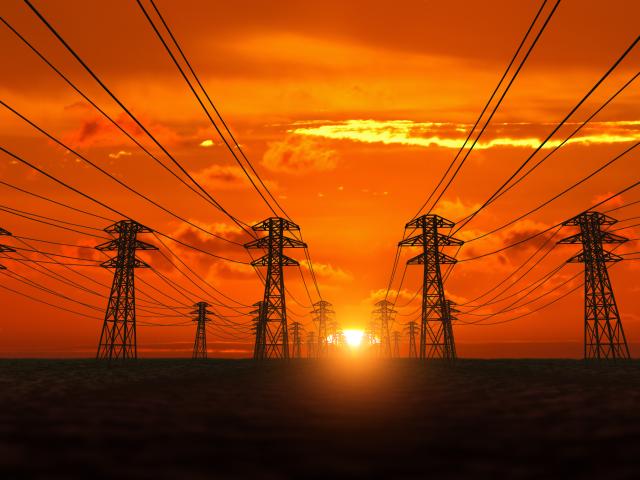
(Source: SSSCCC/Shutterstock.com)
[Editor's note: A version of this story appears in the June 2020 edition of Midstream Business. Subscribe to the magazine here. It was originally published June 1, 2020.]
If the Permian Basin were an independent country, it would be the eighth largest oil and gas producer in the world. The sheer volume of production coming from the shale play—more than 17 Bcf/d of gas and 4 MMbbl/d of oil as of December 2019—represents a tremendous opportunity for operators and suppliers alike.
However, it has also given rise to some unique challenges. Including pipeline capacity, transportation and skilled labor, the logistical and infrastructural constraints that have resulted from the region’s rapid growth are well documented. And now, as production continues to increase, another bottleneck looms on the horizon: the availability of power.
Power from emissions
Unprecedented production growth in sparsely populated West Texas puts significant strain on an electric grid that was designed to handle only a fraction of the power that is being consumed by the region today. While many producers and oilfield service companies are operating in remote areas with no access to transmission lines, those that do have access are increasingly electing to use cheap grid electricity to drive power-intensive process oilfield equipment, such as compressors and pumps.
The spike in electricity consumption, coupled with inadequate infrastructure, has slowed the development of new projects that support growth in the Permian. Excessive demand also threatens the overall reliability of the grid in West Texas by increasing the risk of blackouts.
Finding ways to ensure the availability of power and avoid grid disruptions is not the only issue that producers in West Texas must address. The industry is also coming under increased scrutiny for its gas flaring practices. With limited export capacity, many producers have no outlet for their produced gas. Flaring limits in Texas are less stringent than in many other states; however, it is widely accepted that this leniency will not last indefinitely. Some problems are already emerging, as there have been recent reports of producers that have had to ramp down production because they are exceeding the limits outlined in their flaring permits.
Overall, in 2018, the amount of gas flared in the Permian rose by roughly 85% to 553 MMcf/d, which was enough to meet residential demand across the entire state of Texas.
As regulations surrounding flaring tighten, producers will be forced to find ways to utilize produced gas sustainably. An increasing number of Permian operators are addressing both power and environmental concerns by
capturing the gas, treating it and using it to drive onsite gas turbines, ultimately resulting in increased revenue.
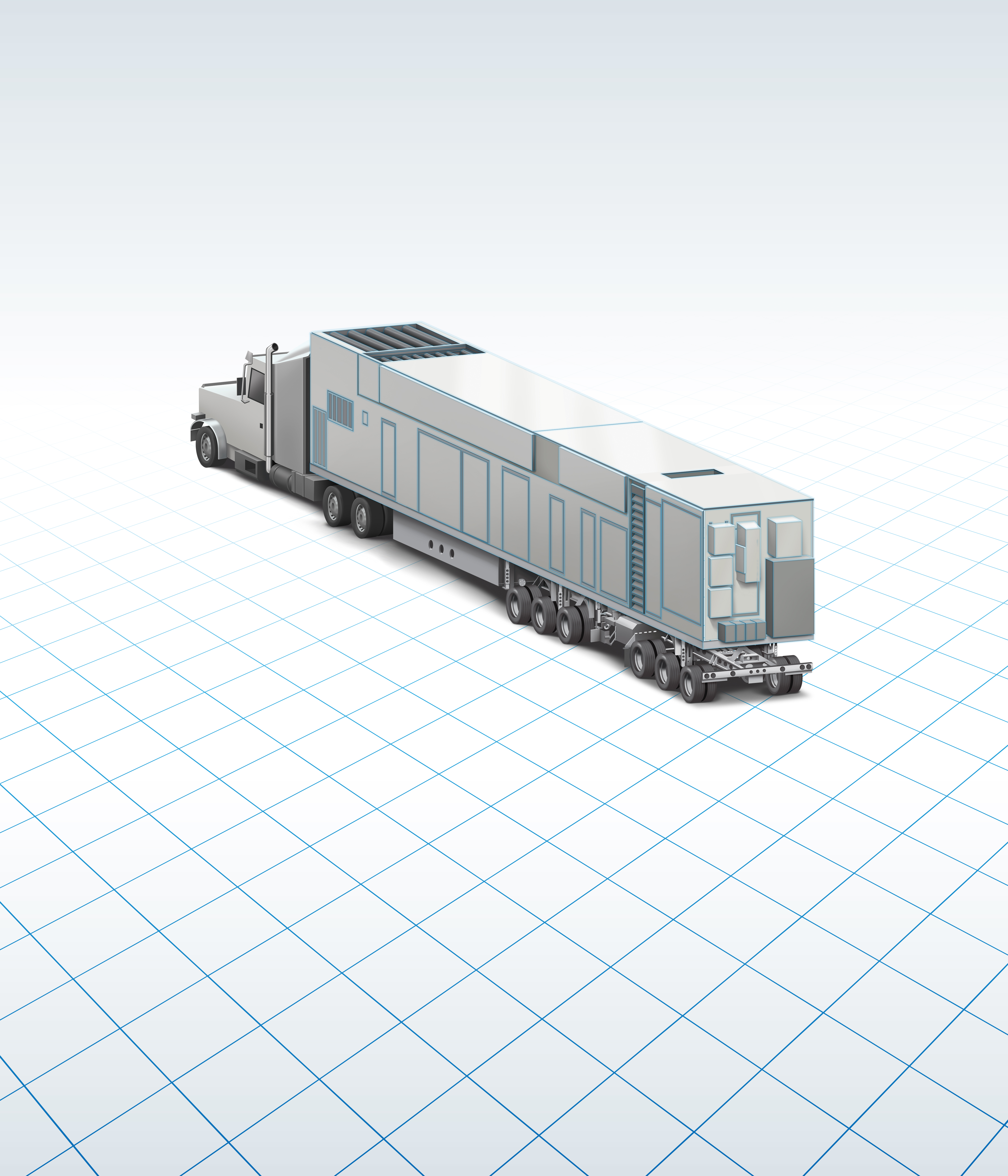
Driving electrification
The trend of oilfield service providers in the Permian bringing power under their supply base should come as no surprise, as many have engaged in long-term agreements with operators that are based on performance guarantees. A loss of power results in nonproductive time, which translates into significant penalties and loss of revenue. With an already-strained electrical grid, the only solution for these companies to ensure uptime is to bring in onsite power-generating assets as either a primary source of generation or as a backup.
The task at hand in regions like the Permian is to deploy efficient generating capacity that can be brought online rapidly. In some cases, the need is temporary, and after some time the power plant may need to be relocated to perform a similar duty.
To achieve this, companies have any number of power-generating options at their disposal, including gas reciprocating engine-driven generators, mobile industrial and aeroderivative gas turbine-driven generators, and full-scale microgrids. Central to these microgrids are mobile gas turbine packages that can burn a range of natural gases, including wellhead gas (or liquid fuels), which enable operators to generate valuable power using a cheap source of fuel from nearby pipeline infrastructure. This gas would otherwise be flared, wasting energy and creating emissions with no associated benefit.
In the case of wellhead gas, once enough fuel is being produced from the wellheads on the pad or from nearby gathering infrastructure, there is no need to transport fuel on site from third parties. This saves costs and relieves road congestion and stress on the public and road infrastructure.
Natural gas processing plants arealso experiencing a rapid transformation toward electrification. While many gas plants in the planning stages in West Texas are opting to purchase power from the grid, others are choosing to build their own dedicated power islands. These power islands allow the operators to realize greater plant reliability and long-term electricity cost savings while retaining greater control of the time line for building their gas plants.
Two primary models have emerged for the operation of the plants. The first model entails the operator maintaining ownership of the plant and operating it using excess gas from the plant, which is essentially free fuel. This option requires a high upfront investment but generally represents the lowest cost approach over the long term. The second model involves allowing an independent power producer to build a power plant near the gas processing plant. In such cases, the independent power producer buys the gas from processors/operators and sells the produced electricity back to them. The advantage of this approach is that it minimizes the upfront investment required by the operator.
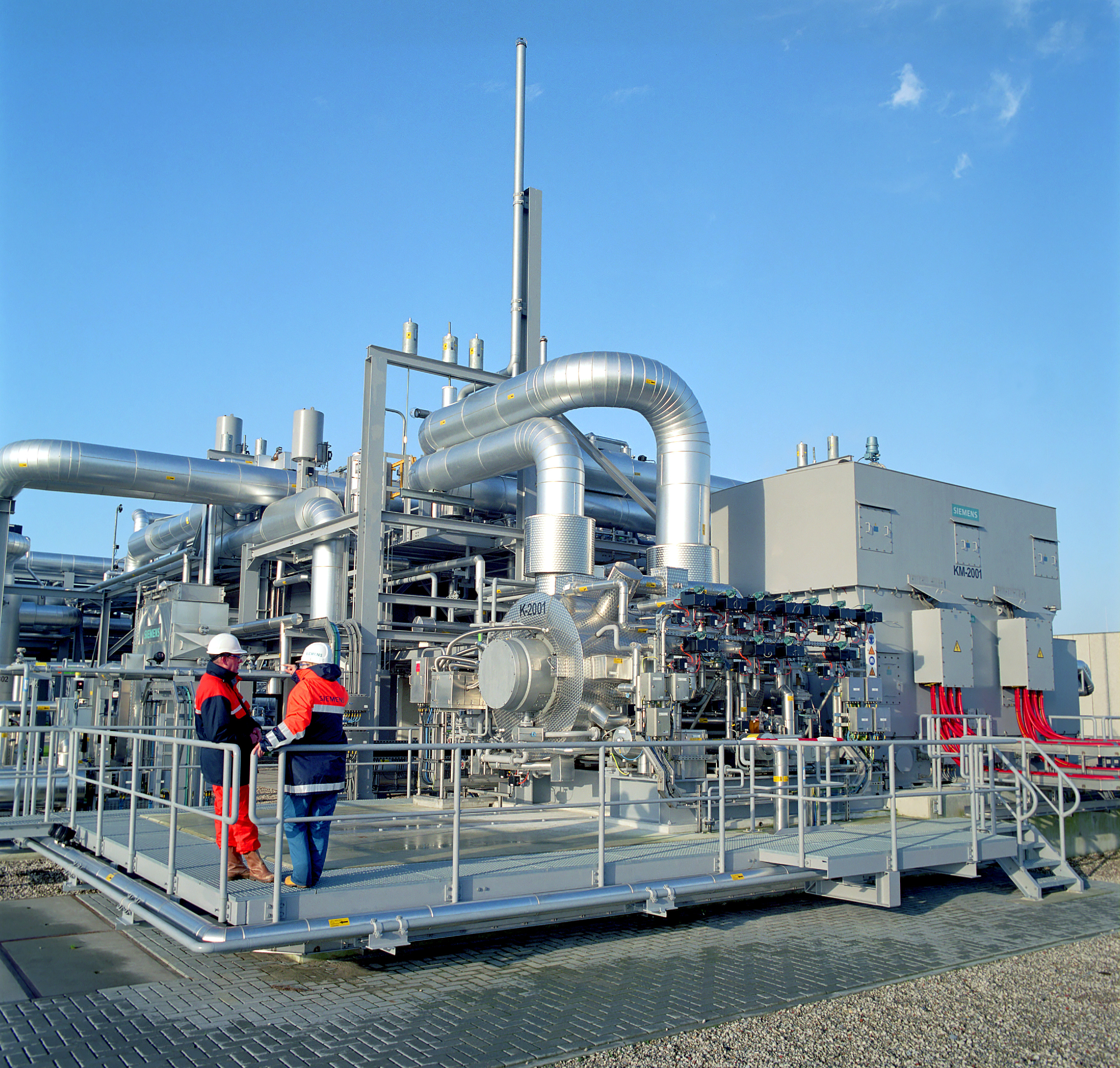
Optimizing assets
In addition to grid power constraints and flaring regulations, Permian producers also must contend with rising production costs. The costs of acreage
and labor have risen in recent years. Coupled with the fact that most of the low-hanging fruit has been picked in terms of cost cutting, operators are now being forced to find new and innovative ways to improve efficiency and increase production value.
One specific area they can do that is in compression.
As the Permian and Delaware basins mature, better planning for the drilling and development of wells has given operators the ability to take a more optimized approach—leading to the strategic positioning of centralized compression gathering systems rather than multiple wellhead compressors, combined storage facilities and larger centralized delivery points. While this reduces the number of assets in operation and enables development on a larger, more efficient scale, it also requires operators to move to larger power blocks of compression and power generation.
Many existing (i.e., older) gas treatment plants in the Permian have flow capacities ranging from 20 MMcf/d to 80 MMcf/d. However, as the demand for both gas and NGL has risen, much larger plants are being constructed, many in the range of 200-plus MMcf/d, with power requirements of up to 60 MW.
Natural gas engine-driven reciprocating compressors have historically been the most widely used option for meeting compression requirements at gas gathering and gas treatment facilities. However, operators have faced significant issues with this choice due to the frequent maintenance requirements at intervals as short as 2,000 hours and the lack of skilled operation and maintenance personnel available in these remote locations.
Powering compression
As a result, electrical motor-driven compression packages powered by the grid (if available) or an onsite gas-turbine generator, which uses excess gas as fuel, are gaining popularity. That said, reciprocating compressors are no longer the economical solution for larger-flow facilities, and centrifugal compressors driven by electric motors, or in some cases gas turbines, are emerging as a more optimum and lower-cost solution to meet requirements for gas gathering and gas processing operations.
Centrifugal compressors’ high-power density, coupled with their reliability, which eliminates the need for standby units, enables plant operators to lower plant capex by upward of 40%. For a 250-MMcf/d gas plant, for example, the entire inlet and residue gas compression duty can often be met by one or two centrifugal compressors. This contrasts with the upward of 10 reciprocating units that would be required to perform the same plant duty.
Additionally, because the need for plot space and the associated infrastructure (i.e., foundations, piping, wiring, cabling, electrical systems, etc.) is reduced with fewer units, site installation costs for the centrifugal solution are significantly lower.
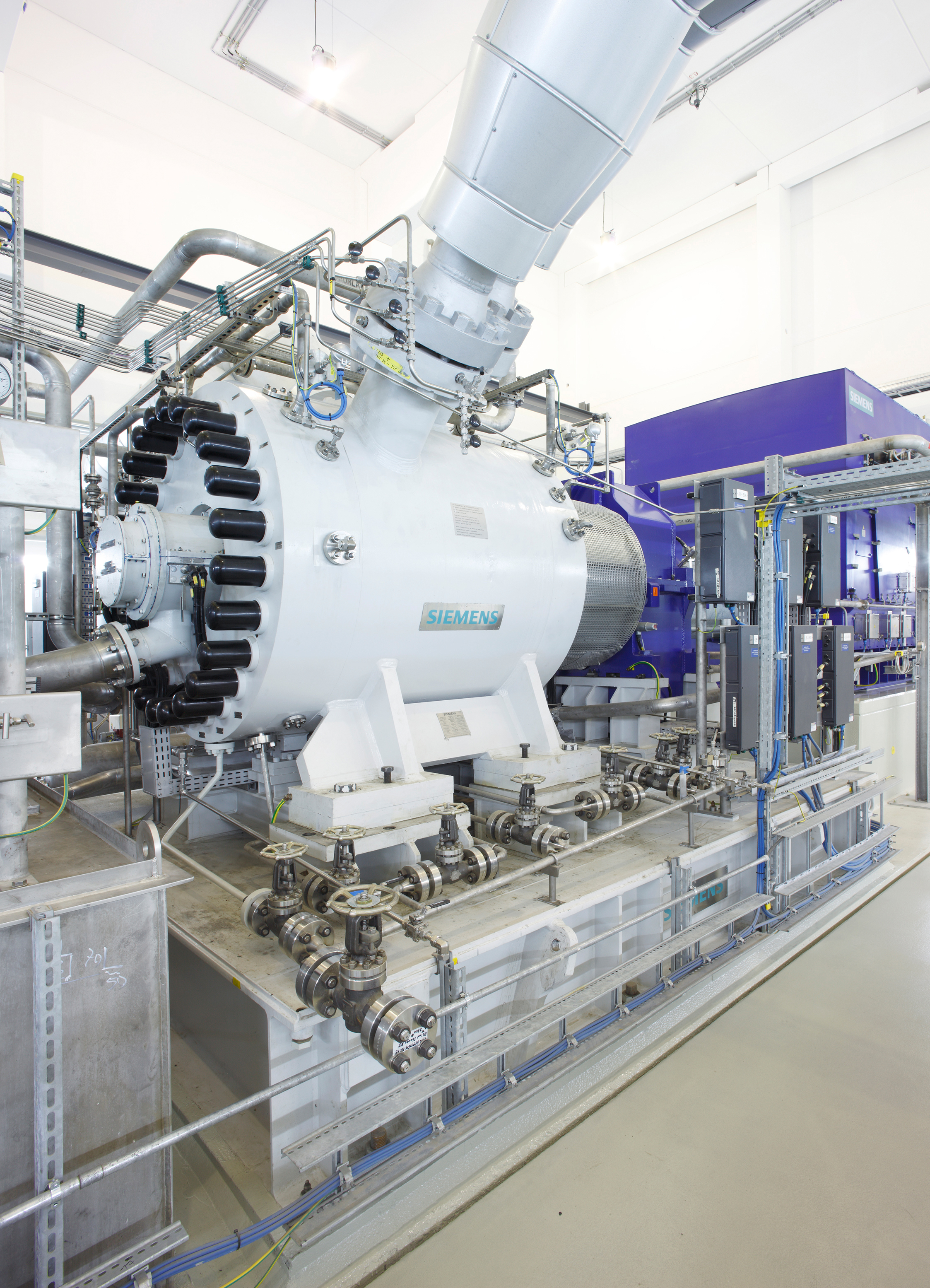
The fact that centrifugal compressors are essentially maintenance-free has added to their attractiveness. These units often run uninterrupted for five to seven years between inspections. As a result, maintenance costs can be reduced by as much as 90% when compared with multiple gas engines. This can be an advantage in places like the Permian, where the availability of skilled service personnel is limited.
Another key factor that operators must consider when deciding between the compression driver solution is emissions. A gas turbine-powered generator unit replacing multiple engines can reduce NOx emissions by three to six times and CO2 emissions by 15 to 20 times—without the use of an oxidation catalyst. This can be significant when it comes to meeting permitting requirements.
Ultimately, choosing the type of compressor and associated driver for a gas gathering or gas treatment facility is not a one-size-fits-all situation.Many project-specific factors must be considered that can tip the scale in favor of one solution or another, including capex, opex, operating profile, delivery time, maintenance, emissions and downtime.
The road ahead
Reliable power enables development in unconventional shale plays. The Permian Basin is currently the largest source of supply growth in the world; however, that growth risks being hampered by infrastructural constraints and bottlenecks.
As the region’s rig count continues to increase and operators build out the necessary infrastructure to power their oilfield operations, the need for companies to offset rising production costs and land prices through further cost reductions and efficiency gains will become increasingly important.
One strategy resource owners can adopt to help achieve those goals is to engage early with a solutions provider that can handle a significant portion of the supply and service scope. From delivery of compressors, drivers and electrification equipment to engineering, construction, commissioning and service, having a single point of responsibility for a project can generate wide-ranging benefits. These benefits include streamlined project execution, shorter delivery times, reduced schedule risk and greater uptime and availability, resulting in lower capex and opex over the life of the facility.
Sanjeev Daruka is head of midstream business development for Siemens Gas and Power.
Recommended Reading
Waha NatGas Prices Go Negative
2024-03-14 - An Enterprise Partners executive said conditions make for a strong LNG export market at an industry lunch on March 14.
Summit Midstream Launches Double E Pipeline Open Season
2024-04-02 - The Double E pipeline is set to deliver gas to the Waha Hub before the Matterhorn Express pipeline provides sorely needed takeaway capacity, an analyst said.
Pembina Pipeline Enters Ethane-Supply Agreement, Slow Walks LNG Project
2024-02-26 - Canadian midstream company Pembina Pipeline also said it would hold off on new LNG terminal decision in a fourth quarter earnings call.
EQT CEO: Biden's LNG Pause Mirrors Midstream ‘Playbook’ of Delay, Doubt
2024-02-06 - At a Congressional hearing, EQT CEO Toby Rice blasted the Biden administration and said the same tactics used to stifle pipeline construction—by introducing delays and uncertainty—appear to be behind President Joe Biden’s pause on LNG terminal permitting.
Energy Transfer Asks FERC to Weigh in on Williams Gas Project
2024-04-08 - Energy Transfer's filing continues the dispute over Williams’ development of the Louisiana Energy Gateway.

